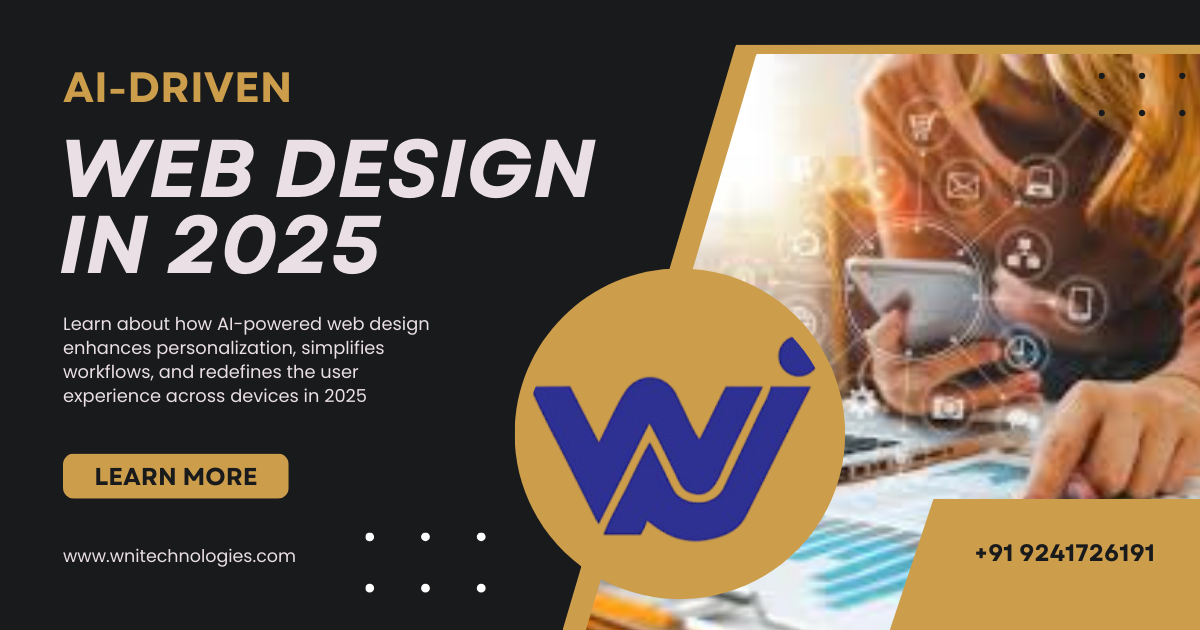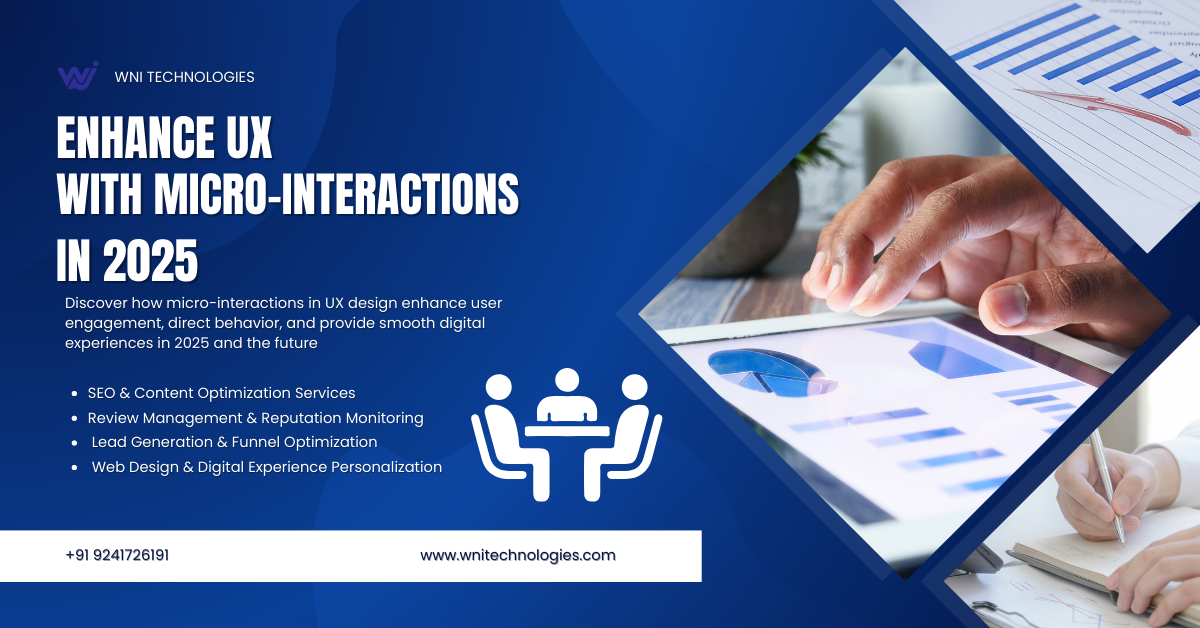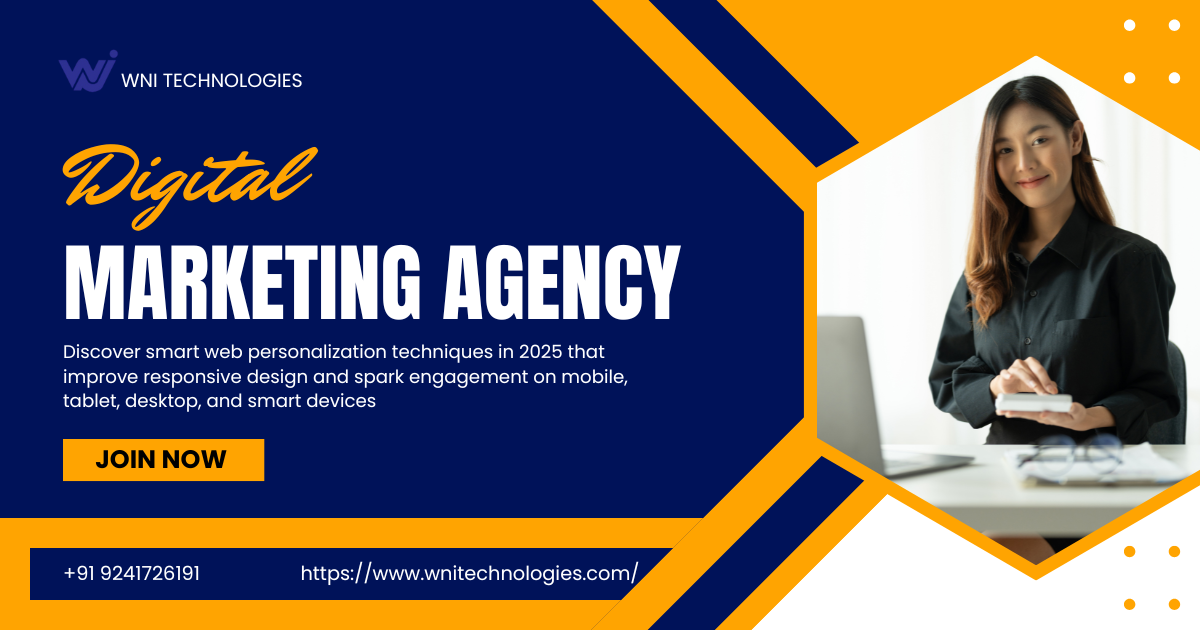
Bridging AI with Web Design: Personalization and Efficiency in 2025
Introduction
The web development of the future is not merely responsive anymore—it’s intelligent. With the fast-changing landscape of artificial intelligence, businesses today are questioning how they engage with user experience, development operations, and content distribution.
As of 2025, AI-based web design is not only a buzz phrase but a prerequisite for businesses aspiring to scale better, adapt more, and get closer to customers.
This article will delve into the ways that artificial intelligence is revolutionizing the web design space with personalized experiences and streamlined efficiencies, and the ways that businesses like yours can take advantage of it today.
What Is AI-Driven Web Design?
AI-driven web design is the incorporation of artificial intelligence technologies into the design, development, and maintenance of websites. It consists of applying machine learning, natural language processing, predictive analytics, and automation to:
- Personalize content for individual users
- Accelerate design workflows
- Automatically test and optimize layouts
- Enhance accessibility and UX
- Create content and design elements dynamically
Why AI-Driven Web Design is Important in 2025
Users expect faster, smarter, and more relevant web experiences. Classical design approaches fail to meet this degree of responsiveness and personalization.
AI solves this by making it possible for:
- Real-time tracking of behaviors and adaptation of content
- Data-driven decision-making for UX
- Automatic layout optimization for various device
- Quick development with code and content generation tools
In essence, AI doesn’t replace designers—it enables them to design better experiences
Advantages of AI-Powered Web Design
- Hyper-Personalized User Experiences
AI uses user behavior (clicks, time spent on page, preferences) to deliver content, CTAs, and even layouts in real-time.
- Better Conversion Rates
By displaying the correct content to the correct user at the correct time, companies drive engagement, lower bounce rates, and enhance conversions.
- Quicker Prototyping and Development
Tools such as Figma’s AI capabilities or Wix ADI leverage AI to provide suggestions for design, generate wireframes, and even code—shrinking development time by a factor of many.
- Autopilot SEO Optimization
AI-powered systems can automatically write meta tags, scan keyword density, generate schema markup, and more—drive search visibility on autopilot.
- Automated A/B Testing
AI repeatedly tests variant headlines, layouts, and copy to learn which ones produce greater results—then applies the most effective ones.
- Accessibility Improvements
AI technology identifies and corrects accessibility problems—making sites WCAG compliant and accessible to all readers.
Major Uses of AI in Web Design
- AI-Powered Website Builders
Applications such as Bookmark, Wix ADI, and Zyro design websites within minutes by asking a few basic questions and employing AI to create content and layouts.
- Dynamic Content Personalization
AI monitors user history, demographics, and behaviors to present personalized product recommendations, content feeds, or service offerings.
- Chatbots and Conversational UI
AI chatbots such as Drift or Intercom interact with users, offer instant assistance, gather feedback, and even lead them through the site.
- Predictive UX
AI predicts what users will most likely do next—like where they will click, what content they will need, or what problems they might encounter—then optimizes the experience accordingly.
- Voice and Visual Recognition
The latest AI-based designs may feature voice navigation and image search to address changing user behaviors.
AI Tools Pioneering Web Design in 2025
Adobe Sensei – For AI-powered automated design insights
Figma AI – Team-based, AI-powered prototyping
Framer AI – AI-powered codeless design generation
Uizard – Converts wireframes into functional prototypes
Wix ADI – AI-based website creation from basic prompts
ChatGPT (OpenAI) – Content, UX copywriting, and chatbot integration
Crazy Egg – AI-powered Heatmaps and behavior predictions
Surfer SEO – AI-fueled SEO optimization
Unbounce Smart Traffic – AI-powered landing page testing
Tidio AI – Intelligent, automated customer interaction
Challenges to Watch
While AI-powered design offers numerous benefits, there are challenges to watch out for:
- Over-personalization can alienate users
- AI-generated content can be devoid of brand voice
- Too much reliance on AI can decrease creativity
- Data protection and responsible use of tracking data
Companies should make sure they counterbalance automation with human control to develop ethical, captivating, and brand-aligned experiences.
How Hirekey Assists in AI-Powered Web Design
At Hirekey, we are experts at combining human imagination with AI innovation to design web experiences that:
- Generate engagement
- Boost conversions
- Grow your business quicker
Whether you require intelligent personalization, chatbot functionality, or AI-fuelled SEO, our experts craft solutions that address your specific needs.
Conclusion
AI-powered web design is transforming the way companies develop and refine their online presence. In 2025, the leaders will be those brands embracing AI for personalization, pace, and engagement.
By combining artificial intelligence into your web design process, you’re not simply keeping pace with the future—you’re creating it.


